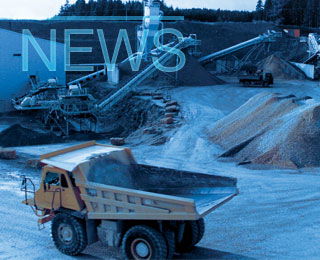Pakistan State Bank has released its annual report for the FY2018-19, in which the bank reviewed the performance of all sectors, including the country's cement industry. Real GDP growth decelerated to 3.3 per cent in FY19, compared to 5.5 per cent last year. While all the economic sectors contributed towards this lacklustre performance, the major drag came from the commodity-producing sector. The slowdown was broadly attributed to contractionary economic policies and inflationary pressures in the aftermath of exchange rate depreciation.
The trend for FY19 was set early on, as the fiscal year got underway with low Public Sector Development Programme spending under the interim government and a ban on purchase of properties of more than PKR5m (US$32,132), for the non-tax-filers. The low demand from the both the private and public sectors throughout the rest of the year remained an issue for the cement industry. However, some of the losses in the domestic market were offset by an increase in exports.
Cement export rebound
However, cement exports rebounded in FY19, rising by 21.9 per cent YoY to US$ 271.7m, according to the report. However, in terms of volume cement exports were up 40.5 per cent.
The increase in installed capacity and the simultaneous slowdown in domestic construction activity, impacted local cement demand and local dispatches fell by 1.9 per cent in FY19 following a 13.2 per cent rise in FY18. Therefore, cement manufacturers shifted their sales towards foreign markets, particularly South Africa, Sri Lanka, Madagascar and Mozambique.
Furthermore, Pakistani exporters were more focussed on clinker as opposed to Portland (finished) cement. Being a low-value added product that is further processed to produce cement, clinker exports fetched much lower unit prices, reflected by the lower rise in value terms when compared to export volumes. However, manufacturers exported sizeable quantities of the material, which completely offset the downward pressure from unit prices.
Furthermore, the recent depreciation of the Pakistani rupee and the alignment of the exchange rate with market fundamentals provides the cement industry a competitive edge to gain more share in the global cement market.
Surplus capacity and output
As per the All Pakistan Cement Manufacturers Association, domestic surplus capacity rose from 7.6Mta in FY18 to 12.6Mta by end-FY19.
The installed capacity of the sector registered an increase of 15.5 per cent from last year's level. Major players such as Bestway Cement, Lucky Cement and DG Khan Cement added 7.7Mta to the domestic capacity in FY19. While this is encouraging, utilisation levels, which had remained in excess of 90 per cent in FY18 fell well below 80 per cent in FY19.
Cement production declined by three per cent in FY19 compared to a double-digit growth of 11.1 per cent in FY18. The dip in performance can mainly be attributed to the various factors. Prior to FY19, the sector had grown by an average annual rate of 7.4 per cent during the past 12 years on the back of healthy economic growth.
